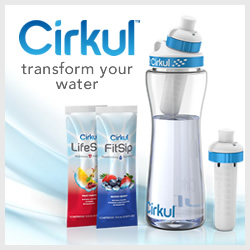If there are many chemicals in ice cream as we talked about yesterday, (What’s That In My Ice Cream?!!!), it makes you wonder what is in other foods we normally eat. Today lets have fun and look at some of these other foods, some of the ingredients are interesting and some may just gross you out.
Crushed Bug Shells Used as Coloring
Pick up some strawberry yogurt, strawberry milk and some cosmetics and you may see an ingredient listed as carmine, cochineal extract or carminic acid. Red, purple, orange, and pink colorings are derived from the cochineal bug. Reports of allergic reactions after eating foods with this coloring have been reported that range from breaking out in hives to being hospitalized. The FDA is requiring that by 2011 food packaging will have a statement indicating the dyes’ insect origins. You might want to keep your yogurt bug free and this recipe can help, Homemade Yogurt “The Easy Way.”
Coal Tar In Red-colored Candies
A coloring called Allura Red AC (Red #2) is made from coal tar and is often found in red-colored candies, sodas, and other sugar filled items. It is interesting that coal tar is on the United Nations list of “Dangerous Goods.”
Fertilizer Found In Many Breads
Ammonium Sulfate is found in many brands of bread, it is added to provide nitrogen for the yeast and thus helps to create a more consistent product. Now I understand why when Grandma made her bread the loves would out slightly different sizes, guess she leaves out the fertilizer. Here is quick easy bread, Texas Skillet Bread.
Candy and Furniture Are Both Shiny
We have all seen that shiny coating on candies, sprinkles and furniture. Yes, I said furniture. The female lac beetle is the source of the secretions that are used to make, shellac. Which yes, you guessed it used as a wood varnish and candy coating.
Human Hair in Bagels
L-Cystein is used in Bagels, Croissants, Hard Rolls, Cake Donuts, Pita Bread, some Crackers and Melba Toast. It is also used as a nutrient in baby milk formula and dietary supplements.L-cysteine is used as a dough conditioner in many bread type foods. It keeps the dough from shrinking and reduces mixing times. Most L-cysteine is made in Japan, China and Germany only. Human hair is the cheapest source for L-cysteine. Yeast raised breads don’t contain L-Cystein. Here are some hair free, Homemade Spelt Biscuits.
Wow, some of indigents above are just downright wrong, like coal tar and fertilizer used in breads. Others are not delightful to consider their use. Hope I have helped to show you why you may want to consider making a few more of your common foods used often in the home, such as yogurt. Don’t forget all the great pro-biotics you get from that homemade yogurt.
Sources:
Got Bugs? Many Foods Colored With Extract From Tiny Beetle
10 Weird and Gross Ingredients in Processed Food


Speak Your Mind